2. Topics of importance category archive
Why is College So Expensive? 0
The cost of private four-year colleges and universities has steadily increased far beyond the means of all but a small % of American households. Here are the first reasons as to why college is so expensive.
The Higher Education Act of 1965 marked the beginning with NO end!
President Johnson signed the Higher Education Act in 1965. The act aimed to strengthen the educational resources of our non-profit colleges and universities in the US and provide financial assistance to students in postsecondary and higher education. What first appeared to be a positive thing has become something entirely different.
There are four primary reasons for that. Read the linked history!
- In 1971, President Nixon broke the 1944 Bretton Woods Agreement and removed the dollar from the gold standard. The Federal Reserve was printing dollars like there was no tomorrow during what is now known as the “Guns and Butter” decade of the sixties. Nixon’s move was the catalyst for inflation as the dollar lost value.
- One year later, Nixon signed Title IX of the Civil Rights Act into law. Many of the most expensive private colleges were beginning to admit women. Title IX prohibits gender-based discrimination in any college or other education program that receives funding from the federal government, aka American taxpayer dollars.
- In the fall of 1979, President Carter raised the Department of Education (DOE) to a cabinet-level position. All colleges agreed with the principles of Title IX. However, a few questioned the long-term impact the law would have on academic freedom and the cost of college. One of those was a highly regarded regional liberal arts college in Pennsylvania…Grove City College. It did not agree to sign the Title IX agreement because it had already followed the ideals of Title IX since the co-ed colleges’ founding in 1876.
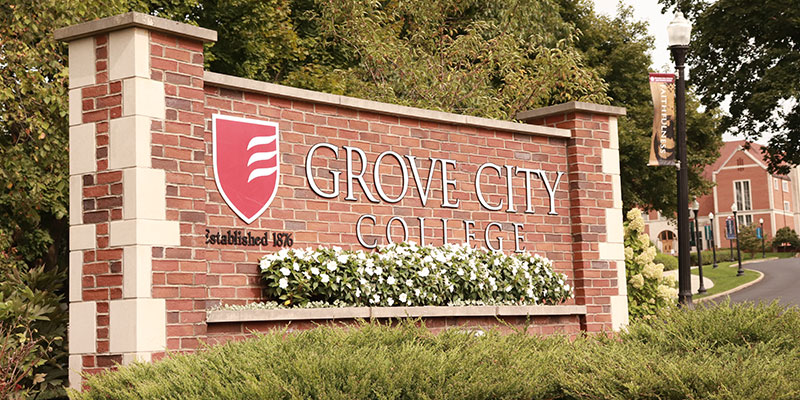
- Upon close examination, the college’s Board of Directors decided Title IX would increase families’ college costs.
Grove City College was 100% correct!
But they had to go all the way to the Supreme Court to maintain their independence. Watch the video on their website. www.GCC.edu. (Type ‘Supreme Court Case’ in the search box.) That is proof enough to show how Title IX has been the key factor in why college is so expensive today!
The entire cost of attendance (COA) for a most competitive four-year private college in 1962 averaged $2300 to $3200/year. 2025, those same colleges will cost $75,000 to $85,300/year. State universities now cost up to $39,000/year. (Out of state, $51,000.) Financial aid has not made the colleges affordable. In fact, in most cases, it has made them more expensive and put more students and their parents into debt. The formulas used to determine “need” penalize families that save for college. The Asset Protection Allowance (APA) in 1990 has been steadily reduced to Zero in 2024! Read what follows carefully.
The Higher Education Act of 1965 included Stafford loans to students at an increased annual amount over five years. However, by 1980, colleges began to increase their yearly costs as the DOE expanded the grant and loan amounts to students with need. All kinds of adjustments to benefit colleges more than students began to appear by astute observers. None of which could be forgiven in bankruptcy.
As families became alarmed at higher costs, the paid college lobbyists went to work and influenced the lawmakers in Congress to make adjustments to “help” families afford college. The DOE made it even less affordable. In 1980, the Parent Loan to Undergraduate Students (PLUS) was introduced as a “generous” funding source for parents. Only one parent needed to sign, and no serious credit check was required. The borrowing limit was $4000/year. However, as colleges increased their costs, their lobbyists went to work.
In 1993, the $4000 annual cap was removed, allowing parents to borrow up to the full cost of attendance, less any other financial aid received by the student. That soon put parents in more debt than the students with their Stafford loans.
It gets worse. Now, Congress does not even believe a family of four, for example, with the oldest parent, age 48, needs an emergency fund of about $49,000! Such budget planning was once sacrosanct and basic to sound family financial planning. It does not say much about either Congress or non-profit tax-exempt colleges’ understanding of basic economics. Now, three to six months of household expenses are considered an asset to pay for college. Not to mention any tax-deferred retirement that was invested during the previous year.
Plus, Congress continues to bend under the pressure of paid college lobbyists NOT to increase the financial need when a family simultaneously has more than one student in college! In other words, if the Student Aid Index (SAI), formerly the misnamed Expected Family Contribution (EFC), were $40,000 with one in college, it would be the same for each student in college, not $20,000/per student.
The Department of Education’s Federal Student Aid Office changes will affect seniors, rising 11th graders, and younger. Therefore, parents should be aware of what is coming for planning purposes. If a family with more than one child is not debt free by the time the first applies to college, the family income is less than $400,000, and the family is living below its means, there will be some challenges ahead.
The good news is that practical solutions can be implemented to lessen stress and lead to positive outcomes. It is a simple three-step process.
Call Programs for Education @ (978) 820-1295 or email help@SmartCollegePlanning.org to learn about the money-saving Dry Run that very likely will save you thousands each year in college costs, not to mention time.
Do You Have College Aspirations? 0
 The college-bound Class of 2027 is now in their junior year. Is that you? In some ways, it is the most important year for you. It is your last reprieve before the hectic college admission schedule of senior year begins… not in September, but in June 2026. Just ask the seniors what this means and they’ll tell you! But you can avoid most of the stress and frenzy by getting organized this fall semester. You should have already set up an account at www.Commonapp.org even if you think you are only going to apply to a state university. Even if you are a freshman. Call us with any questions anytime. (978) 820-1295
The college-bound Class of 2027 is now in their junior year. Is that you? In some ways, it is the most important year for you. It is your last reprieve before the hectic college admission schedule of senior year begins… not in September, but in June 2026. Just ask the seniors what this means and they’ll tell you! But you can avoid most of the stress and frenzy by getting organized this fall semester. You should have already set up an account at www.Commonapp.org even if you think you are only going to apply to a state university. Even if you are a freshman. Call us with any questions anytime. (978) 820-1295
As a junior, you can probably see the end of your high school career is near. One of the most important factors that colleges take into account is your course selection and grades. Colleges also place more emphasis on your junior and senior grades than those from previous years. (Excuse me! That is NOT true, it depends on the college.)
Junior year is also the second-best time (sophomore is better) for most of you to be participating in meaningful extracurricular activities. However, only get involved in the activities that truly interest you. Try to make a significant contribution to something that you enjoy doing outside of the classroom. It does not have to be school-related either. When colleges look at your activities they want to see the quality of participation, not quantity. This year may also be a good time to drop some of the activities that you really don’t care for and focus on those that you enjoy.
If you’ve never had a meaningful conversation with any of your teachers, now is the time to do so. Don’t force it, but building a natural teacher-mentor relationship with your teachers is a good thing. Next year you will need to ask at least two or your junior year teachers for recommendations. Ideally, he or she will be able to not only write about your intellectual curiosity, improvement over the year, and overall classroom participation. but something specific you have done in that class. At the MOST competitive colleges, with thousands of applicants with identical academic profiles, the recommendations can be the deciding factor. After you click the link above and read my essay there, ask me for the special “icing on the cake” letter that you can send along to the teacher, with your all-important thank you letter! 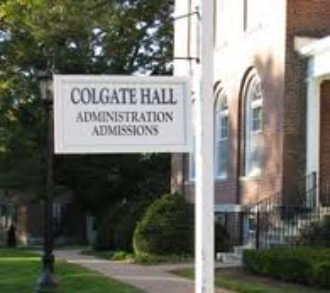
Finally, you should also take this time to start collecting and organizing information from colleges. If you have started this process with us, you now have a good list of colleges based on the results of four insightful self-assessments (Personality ~ Nine Natural Intelligences ~ Learning Style ~ Skills) and your personal preferences. Plan to visit colleges during your winter and spring breaks later this year. For now, you can visit colleges on the web using the AAA method to become familiar with what they have to offer and if they have the qualifications to help you reach your goals. In your personal binders you have my essay on “How to Get the Most Out of Your College Visits” . But here is another one. Let me when and where you will be visiting, if possible. For particular colleges I may have some specific tips for you. (978) 820-1295.
How to Ensure That College is a Good Investment 0
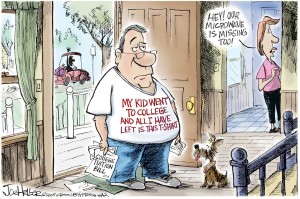 When the high school Class of 2026 becomes the college Class of 2030 as freshmen in college, the College Board continues to support the belief that earning a college degree now is more important than ever in the global economy. A typical bachelor’s degree recipient, they claim, earns 80 percent more than a high school graduate over a 40-year career, amounting to more than $500,000 over a lifetime. That financial incentive has resulted in an enrollment surge for American colleges and universities in the past decade.
When the high school Class of 2026 becomes the college Class of 2030 as freshmen in college, the College Board continues to support the belief that earning a college degree now is more important than ever in the global economy. A typical bachelor’s degree recipient, they claim, earns 80 percent more than a high school graduate over a 40-year career, amounting to more than $500,000 over a lifetime. That financial incentive has resulted in an enrollment surge for American colleges and universities in the past decade.
In addition, since 1990, supply and demand and increased Federal Aid loan and grant programs (for the poor) have allowed colleges to continue raising tuition and fees faster than inflation. (Grove City College is a prime exception.) This has stretched parents’ budgets, with incomes ranging from $100,000 to $350,000, to save even enough to cover one or two years of college costs. In past posts, I discussed why college is so expensive.
When the financial bubble burst because of lack of oversight of investment banks in 2008, average college costs in the U.S. consumed some 40 percent of median earnings in the United States, up from less than a quarter of income eight years earlier.  Now, as students and parents have fallen prey to the student loan scam, debt has surpassed more than $1 trillion, and parents are asking what they were getting in return for the high cost of a college degree. While the value of higher education in preparing for a career continues to be the big selling point in promoting college, prospective students and their parents are beginning to cast doubt on the return on investment of certain majors and particular colleges.
Now, as students and parents have fallen prey to the student loan scam, debt has surpassed more than $1 trillion, and parents are asking what they were getting in return for the high cost of a college degree. While the value of higher education in preparing for a career continues to be the big selling point in promoting college, prospective students and their parents are beginning to cast doubt on the return on investment of certain majors and particular colleges.
In response, many colleges, like Lafayette and High Point University, are focusing even more on their students’ outcomes and putting in place programs to prepare their undergraduates for the job market better. In an extensive survey of college leaders conducted by The Chronicle of Higher Education in the fall of 2014, six in 10 reported increased discussions about job preparation for their graduates in just the past three years. The survey, completed by some 800 vice presidents, deans, and directors at two-year and four-year colleges, focused on their attitudes about the value of their degrees, strategies to measure the outcomes of their graduates, and what skills higher education should provide to students.
President Obama used the annual address to announce new higher-education proposals that did not bring joy to college administrators who wanted more federal dollars for student aid. But on this night, the president was not to announce any new federal investment in higher education. Instead, he said his administration would release a new College Scorecard that parents and students can use to compare schools based on a simple criterion: where you can get the most bang for your educational buck.
Now, a government tool (and additional layers of costly, redundant bureaucracy) would turn college into a product to compare in the same way consumers size up cars or televisions in Consumer Reports. The more things that change, the more they stay the same. Everyone wants to protect what they have, mainly if what they have is a cash cow.
Working with students with college aspirations, we show them the value of following steps that will lead to the outcomes they want. One of those steps is helping them discover what they want, and another is helping them understand the financial ramifications of those decisions.
 While colleges and universities attempt to redefine their approaches to measuring student outcomes after graduation, we show families how to do their due diligence in estimating the merits of colleges by asking good questions and applying good old, albeit rare, critical thinking.
While colleges and universities attempt to redefine their approaches to measuring student outcomes after graduation, we show families how to do their due diligence in estimating the merits of colleges by asking good questions and applying good old, albeit rare, critical thinking.
It all starts with a complimentary get acquainted, no obligation conversation with us at (978) 820-1295. Simple postgraduate surveys are not enough for many prospective parents and students. However, there are proven methods to prepare students for the job market and measure their success long after graduation.
Are You Ready to Apply Early Decision, or for that matter Early Action? 0
It never fails. As fall approaches each year, college-bound seniors are being asked by their peers, What schools are you applying early to? or What is your ED (early decision) school? The questions are almost presumptive in tone as if applying early is the best strategy in applying to college.
Students assume they will be applying early somewhere. Forget about the fact that they may have not even started the essays, done any substantive research into the college or have learned if it is affordable or not and how the adcoms will look at that them.
I remind them each year that if they have identified a college that it absolutely their first choice and would die if not admitted, to discuss the merits with me. There are many different types of admission policies. Here I will discuss how to approach making the Early Decision, decision. But it is also applicable for Early Action which is often a more competitive pool in which to compete.
However, since Early Decision is a binding commitment to attend if admitted, it is important to make sure that each student considers the most important question of all. That is Is applying Early Decision the right choice for you? Here’s a self-quiz to help you decide if you’re ready to apply Early Decision.
Answer Yes, No or Not Sure to the following questions:
1. Are you applying Early Decision mainly because you have decided that one particular college is your clear first choice?
2. If the college you’re considering for Early Decision suddenly became less prestigious, or its ranking dropped 50 points, would you still want to apply to this college Early Decision?
3. Would you still want to apply to Early Decision college if your chances of admission were the same as if you used to attend Regular Decision?
4. Have you visited your prospective Early Decision College at least once, including taking a formal admissions tour rather than just walking around on your own?
5. Have you visited several other colleges, including taking their formal admissions tour rather than just walking alone?
6. Have you had some form of personal contact with the admissions office at your prospective Early Decision College? Have you researched the internship requirements, if any, for your prospective major?
How to Show You Are Interested 0
 When I looked at colleges, DI stood for drill instructor, not demonstrated interest. Many kids in my generation had very little interest in knowing the DI. In the myriad of acronyms and abbreviations surrounding the college process today, DI refers to the level of interest the applicant demonstrated in a particular college.
When I looked at colleges, DI stood for drill instructor, not demonstrated interest. Many kids in my generation had very little interest in knowing the DI. In the myriad of acronyms and abbreviations surrounding the college process today, DI refers to the level of interest the applicant demonstrated in a particular college.
How important is the college admissions committee (ad com) placed on demonstrated interest? The answer is not much, some, and very much. In other words, it depends on the college. Emory and American, for instance, will admit it considers the applicant’s level of interest. Others, like Stanford and MIT, may say it does not matter how much interest you show; they look at all applicants equally. But I suspect they say that to ward off students who want to game the system, as you will learn here.
Regardless of what a school may say, I recommend that all students try to show demonstrated interest and learn as much about their prospective colleges as possible. It all starts with research using the AAA method. Once that is accomplished, the student should have a good idea of the appropriateness of each college on his or her list. Is it a good fit intellectually, compatible with one’s values, and, based on the Common Data Set, is it a reach, a 50/50, a safety, or in the snowball chance in ____ category? Not to mention, are they affordable? Further inquiries must be made if such due diligence still leaves the college on the list.
Such inquiries may be described as showing demonstrated interest, and that is fine. For instance, prospective students should know the depth and nature of academic internships and career advising. Other good conversation starters are:
- Is the faculty 100% invested in the teaching of undergrads, and if teaching assistants are used, what are their responsibilities? (Universities primarily)
- What has been the four-year graduation rate over the last four years, and does it vary with major?
- Are specific programs offered in the (your intended major) department going to be expanded or cut back?
- I am a student at a high school that does not give grades. Are you familiar with the ________ Schools curriculum? How do you compare my application with someone from a more traditional high school?
- What will be the merit scholarship criteria for the _______ Scholarship next year?
Do this more to learn more about the school’s attitude toward students than with the intent of buttering up the regional admissions counselor. Colleges can spot the disingenuous inquiry. Thoughtfully think about the questions before you call (or email) them. Of course, be sure you are not asking questions already answered in the college website’s fast facts or FAQ sections.
By the way, too many students are taking their safety schools for granted. Applicants should have some good reasons why they would be okay with their safety, too. Carefully research and show interest in them as well. Such fallback colleges have been known to wait-list or reject students whom the adcom has determined would not attend if accepted. No college markets itself as the # 1 favorite safety school, so buyers beware. Even state colleges are hard-pressed to admit the students they once could because of the overflow of applicants. States are cutting back faculty, programs, and other costly expenditures that have once been taken for granted. In many cases, a top student may be able to go to a private college at much less than a state-supported public.
If you are in the Class of 2026, now is the time to review your college list. Most of you will take the SATs and the ACT this year. At the end of June 2025, you will start the college application and essay writing process; call or email us if you need help.
Making Your Final Decision 0
Countdown to National Deposit Day!
 At this time of year high school seniors have heard from the colleges to which they applied. The most competitive colleges and universities are finished reviewing applications from all of the country and the world. April 1 is the date that all colleges will have sent out letters to anxiously awaiting seniors.
At this time of year high school seniors have heard from the colleges to which they applied. The most competitive colleges and universities are finished reviewing applications from all of the country and the world. April 1 is the date that all colleges will have sent out letters to anxiously awaiting seniors.
There will be just one month from then until “National Deposit Day”. May 1 is the day by which all college bound seniors must decide where to enroll in the fall of 2025. Some colleges extended that date last year to May 15 because of the delay in the processing of the newly designed Federal financial aid form, the FAFSA. Making the final decision may not be easy unless students have done certain things in the year or two prior to the spring of the senior year. Most students are usually presented with at least two positive alternatives from which to choose. The pandemic has made it much harder for students to do their best work over the years from 2020 through 2023. Unfortunately, there is still confusion and questions surrounding the science. (Read December 2024 post for updated information.) In addition, colleges have had a much more difficult time during the application reading and selection process. Trying to measure college readiness or candidates without standardized test scores in many cases and differing grading systems instituted in the junior year when distant leaning was in full effect.
So how does one go about making an effective decision ~ a decision that allows the entire family to win? The following steps are what we advise our students. Think about these even if you will not be facing such a decision for a few years.
The overall goal, I believe, is to integrate the academic decision with financial considerations. That is particularly important when there is more than one college bound child in the household.
First ~ Think about the academic reasons those colleges were on your list in the first place. Review the departmental majors and using the second “A” of the AAA process learn more about student outcomes with that major at that college. Read my essay “What is College For” and follow the links.
Second ~ Make an objective evaluation of each financial aid award. Determine how much aid the college is awarding in the form of grants, scholarships, and loans. Most colleges do not include adequate amounts in the cost of attendance (COA.) to include personal expenses. These are books, supplies, personal sundries, and transportation. If you have done a money saving Dry Run with us prior to your students application you will see that we often add $4,500 to the direct expenses. The direct expenses are the fixed billable costs, tuition, fees and room and board. You should too.
Keep in mind that college work-study is not a direct credit toward billable costs. Do not include that in your calculations. If there is a loan offer in the award (other than a Stafford), do not include that either. Subtract all the other awards from your COA and you will close to knowing what the real out of pocket cost is for that college. Do this for each college and make an objective comparison.
Are You a Procrastinator? 0
If you are, you may put off reading this. That would be your first mistake. To all you college bound students, you will soon be taking a milestone step in your life journey. Hopefully it will be the college of your dreams. Even if it is not, if you have done your research properly, all will work out fine. Thousands of college graduates have learned, in hindsight, that it was meant to be and it wasn’t bad after all.
They quickly learned in the first month of college that a professor’s expectations and assignments given would be nothing like those from teachers in high school, even those AP classes they took that were supposed to prepare them for college level work. Those that got through in four years quickly learned how to get organized and stay focused.
If you were a last-minute kind of student in high school, that may have worked. But college is a different world. If it is not, then you may be at the wrong college. Because if you are not challenged, you will not grow intellectually, spiritually, or socially. But I digress.
The phrase “I’ll do it later” is probably the biggest killer of college success. Chances are, you will not get it done later. If you do wing it later, it will be sloppy and not your best effort. This causes stress and sets you up for the kind of anxiety that leads to dropping out of college because of low grades and/or illness.
The day planner that your proud grandmother gives you at high school graduation won’t do you any good if you are constantly putting things off. Sometimes students (and adults) put things off because they are intimidated by them. It manifests in the subconscious. You are afraid of failure so you set yourself up for failure. The solution is to simply get started. Break the task into manageable chunks and schedule time for each task.
Maybe it is long blocks of time that you find intimidating or tedious. No problem. You can do anything for 25 minutes. Am I right? Work with NO distractions. Put the electronic gizmos away and out of sight and sound. That includes the ear buds. No, you don’t work better when you listen to music. 🙂
Buy a timer and set it for 25 minutes. Focus on the task seriously for that period. As you begin to see something accomplished, whether it is a writing or reading assignment, you will begin to feel better about it. Dare I say, even inspired to do more. You also will soon realize that by tacking homework when it is assigned is soooo much easier than waiting until the 11th hour.
Still stuck? Another technique you can apply is to blatantly lie to yourself. Tell yourself that you don’t have to do the entire thing. You are just going to read a couple of paragraphs or just draft an outline. What will happen is that you will get some momentum going and realize that you can do more than you first thought.
Reading a few paragraphs becomes finishing the whole chapter. Outlining the paper becomes drafting the first paragraph and so on.
You are not alone, the majority of humans find a reason to put things off that we either don’t deem important or don’t like even if we know it is important. Even administrators at the most selective colleges like Princeton University realize that procrastination needs to be addressed. Look here to see what they have done to help their undergraduates.
Do You Want to be a Doctor? 0
 Do you have a student or are you a student with aspirations to be a Doctor of Medicine or pursue any healthcare profession? With all the talk about healthcare issues and challenges, our basic western system of Allopathic medicine continues to frustrate both the patient and caregiver. My strong suggestion to aspiring doctors and nurses is to read this book and/or this one and watch this in its entirety before entering a field that is getting more purblind in understanding true wellness and based on scientific methods that have proven to be inadequate when it comes to curing…much less preventing disease.
Do you have a student or are you a student with aspirations to be a Doctor of Medicine or pursue any healthcare profession? With all the talk about healthcare issues and challenges, our basic western system of Allopathic medicine continues to frustrate both the patient and caregiver. My strong suggestion to aspiring doctors and nurses is to read this book and/or this one and watch this in its entirety before entering a field that is getting more purblind in understanding true wellness and based on scientific methods that have proven to be inadequate when it comes to curing…much less preventing disease.
My philosophy of placing more emphasis on diet and nutrition in the prevention of disease than the treatment of symptoms and strengthening the body’s natural immune system is making more sense as the nation as a whole becomes sicker physically, mentally, and spiritually. Bastyr University and other 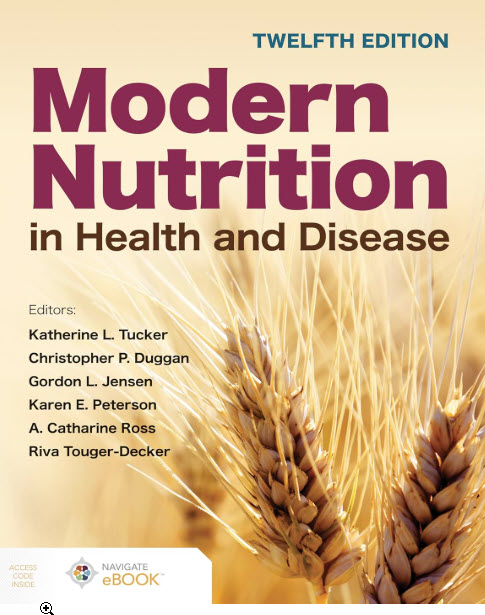 Naturopathic colleges teach that approach. It is all about the ounce of prevention worth more than a pound of cure. Mainly when the cure is designed to manage the symptoms with questionable drugs and not address the real cause of the disease. Recently, intelligent whistleblowers have been speaking out against the other big-money maker product, vaccines! It is, particularly now, a significant risk as more M.D.s are realizing how damaging vaccines can be. Nowadays, it is essential that parents, particularly mothers, research the reasons for any vaccines and how they are determined to be safe before allowing their children to be vaccinated.
Naturopathic colleges teach that approach. It is all about the ounce of prevention worth more than a pound of cure. Mainly when the cure is designed to manage the symptoms with questionable drugs and not address the real cause of the disease. Recently, intelligent whistleblowers have been speaking out against the other big-money maker product, vaccines! It is, particularly now, a significant risk as more M.D.s are realizing how damaging vaccines can be. Nowadays, it is essential that parents, particularly mothers, research the reasons for any vaccines and how they are determined to be safe before allowing their children to be vaccinated.
Not convinced? Here is a refreshing, well-researched article by a West Point graduate and former army officer. Now, with Codex Alimentarius, Big Pharma is trying to make it illegal for a physician to practice proven alternative therapies to heal the body and/or prevent the disease in the first place. Call me if you wish to explore proven solutions to achieve optimal health for your family. It’s not “rocket science”. Eric Goodhart
Future Docs Are Confused, Too
Struggling to understand the national debate over health care? You’re not alone — your future doctor may be baffled, too.
A study published in the September issue of Academic Medicine found that nearly half of all medical students believe they have been inadequately educated about the “practice of medicine” — especially related to medical economics.
Our patients expect us to understand the system, said Matthew M. Davis, one of the researchers and an associate professor of pediatrics and internal medicine in the Child Health Evaluation and Research Unit at the University of Michigan’s medical school. If we don’t, that can result in poor patient care. And if we don’t expect doctors to understand the healthcare system, who will?
The study, by Davis and two colleagues at Michigan, examined tens of thousands of survey responses from medical students about the extent and perceived quality of their training in an array of curricular areas, including clinical care and decision-making and the practice of medicine—the latter including health care systems, managed care, and practice management, among other areas. Read more »
RATIO ~ SCHMATIO 0
Ratio ~ Schmatio
By SAMANTHA STAINBURN (Former managing editor of Teacher Magazine)
ISABELLE CARBONELL, a college senior from Bethesda, Md., has thrived over the last four years as part of a small learning community. Most of her classes have had fewer than 35 students. For freshman and sophomore years, her dormitory was in the same building as the cafeteria and many of her classrooms and professor’s offices. You see the same people over and over, and that lets you create networks, she says. You get to know your professors informally. You see them in the hallway, they say, How that project going along and you bounce ideas off them. Prospective undergraduates are deluged with statistics from average class size to the number of Nobel Prize winners on staff with which to take the measure of a college. Is Ms. Carbonella’s story an argument for choosing your college by the numbers?
Not exactly. She attends the University of Michigan at Ann Arbor, which has some 25,000 undergraduates, 4,100 full-time faculty members and 540 buildings. If she had been looking for an intimate experience, the numbers would have led her elsewhere.
That’s just one of the problems with statistics: they rarely tell the whole story. (Ms. Carbone’s story is that she signed up for Michigan’s Residential College, a program in which students live and attend classes in the same building. She now lives off campus but continues to take classes in the R.C. building.)
Another problem with numbers: Often statistics don’t measure what’s important, says Lloyd Thacker, executive director of the Education Conservancy, a nonprofit group working to improve the college admissions process. For example, the selectivity of a college, measured by how many applicants it denies, provides little information about the educational experience there. Read more »
Now What? 0
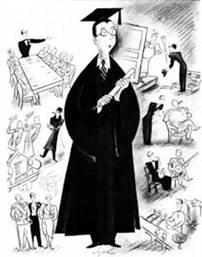 Now What? That is the title of a book by Ari King, in 2009 he was an unemployed graduate of Wesleyan University with a $180,000 degree in Italian Studies. He spent the summer after graduation at his home in California thinking about what to do with his life. At summer’s end, with no job prospects, he headed to New York City thinking his opportunities would be better in a town with 8.4 million people.
Now What? That is the title of a book by Ari King, in 2009 he was an unemployed graduate of Wesleyan University with a $180,000 degree in Italian Studies. He spent the summer after graduation at his home in California thinking about what to do with his life. At summer’s end, with no job prospects, he headed to New York City thinking his opportunities would be better in a town with 8.4 million people.
A friend who was a senior at NYU offered him a place to stay with his five roommates. It was deja vu all over again, but now with six roommates, not one. Sleeping bags come in handy in the city when there isn’t a couch available.
Each day he would scour Craigslist and elsewhere, looking for jobs under every category from ˜Government” and ˜Education” to ˜Russian speaking Nanny” to ˜Security Guard”. He grew increasingly frustrated, with a gnawing feeling of defeat and anxiety. Even hospitality jobs, where a decent income from tips could be quite good, were scarce. Once a person landed such a job, they didn’t leave. With the unprosecuted malfeasance on Wall Street, everyone was playing it safe.
His real world wake-up call reaffirmed what I have been seeing for the last 25 years. Too many colleges, for one reason or another, do not prepare their students to bridge the gap from college to the real world very effectively. Of course, we cannot put the blame entirely on colleges. That is why I tell high school students that it is their responsibility to thoroughly research the advising and career services of the colleges they are considering. It is the all-important third A in the AAA process. Plus, they must become a familiar face and known to the personnel in the career services offices no later than the second semester of freshman year. After all, what is college for?
Now, because of the latest pandemic (remember this one?) many people are unemployed or underemployed, not just recent college graduates. What does one do when one can’t get a job? Some may say, keep looking; don’t quit! Easy for them to say. But there is one thing that many bright people with initiative (college degree or not) are realizing; that if you can’t find a job or don’t like the one you have, create one!
But first, you have to look within yourself and identify honestly what you are good at. Ask yourself if you can use that natural strength to not only meet a need that people have but will pay you to fill it. For instance, Ari King enjoyed writing and his teachers recognized he had a flair for writing. He looked around his world. Why not write a guidebook that will help college students prepare for life after college? He did not see many that addressed the issue. He thought “Would people be interested?” The answer, judging by these Amazon reviews, is yes!
While reading his book I was amazed at the majority of college graduates he interviewed who went to college with little thought put into how they were going to live and pay bills after college. Each graduate was asked what regrets he or she had and what could have been done differently. The majority said they did not use the career services office early enough (or at all) to find internships. No wonder so many were jobless upon graduation or working in jobs that a high school graduate would be qualified to do.
little thought put into how they were going to live and pay bills after college. Each graduate was asked what regrets he or she had and what could have been done differently. The majority said they did not use the career services office early enough (or at all) to find internships. No wonder so many were jobless upon graduation or working in jobs that a high school graduate would be qualified to do.
I recommend the book Now What? and encourage all students thinking about college or in college now to read it this summer before they realize that the years in college are a waste of time and money. Contact us if you REALLY want to make sure college is a good investment as well as learn how to keep yourself healthy during these challenging times…and beyond!


